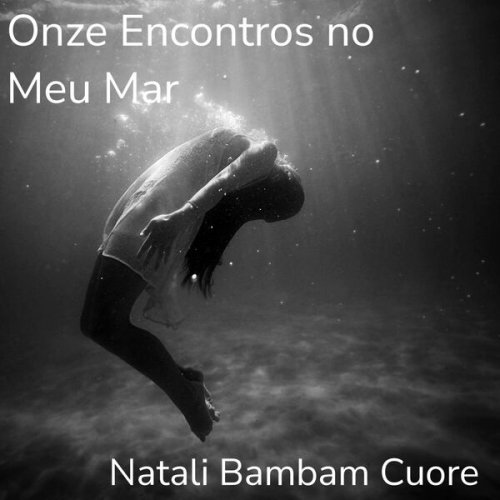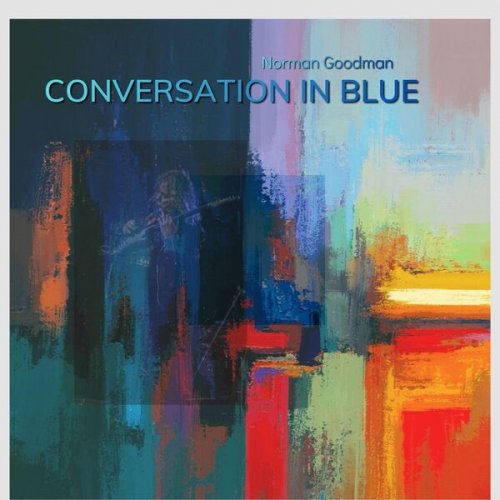Nicolas Haigh - Nicolaus Bruhns: The Complete Organ Works; Vincent Lübeck: Ich ruff zu dir Herr Jesu Christ (2025)

Artist: Nicolas Haigh
Title: Nicolaus Bruhns: The Complete Organ Works; Vincent Lübeck: Ich ruff zu dir Herr Jesu Christ
Year Of Release: 2025
Label: Raven
Genre: Classical
Quality: FLAC (tracks)
Total Time: 54:30
Total Size: 249 MB
WebSite: Album Preview
Tracklist:Title: Nicolaus Bruhns: The Complete Organ Works; Vincent Lübeck: Ich ruff zu dir Herr Jesu Christ
Year Of Release: 2025
Label: Raven
Genre: Classical
Quality: FLAC (tracks)
Total Time: 54:30
Total Size: 249 MB
WebSite: Album Preview
1. Nicolas Haigh – Praeludium in E Minor (the longer) (10:26)
2. Nicolas Haigh – Nun komm, der Heiden Heiland (11:32)
3. Nicolas Haigh – Praeludium in E Minor (the shorter) (05:27)
4. Nicolas Haigh – Ich ruff zu dir Herr Jesu Christ (14:31)
5. Nicolas Haigh – Adagio in D Major (fragment) (02:51)
6. Nicolas Haigh – Praeludium in G Major (09:40)
Nicolaus [Nikolaus] Bruhns (1665-1697) was a Danish-German composer, organist, violinist, and viol player. Born in Schwabstedt, he was part of a small musical dynasty; his grandfather was a lutenist in Lübeck and his father was an organist. According to contemporaneous sources, Bruhns was something of a child prodigy, performing at the organ and composing from a young age. At sixteen years old, Nicolaus, along with his younger brother Georg, was sent to Lübeck to study violin, viola da gamba, organ, and composition. Dietrich Buxtehude, a foremost organist and composer of the day, considered Bruhns as a fine organ pupil, later recommending him for a position in Copenhagen. In 1689, Bruhns successfully competed for a position at the Stadtkirche in Husum which he would hold until his early death in 1697. Sadly, none of Bruhns’ chamber music has survived; notably absent from his oeuvre are his compositions for violin and viol. However, his prowess as a string player and mastery of technique can be seen in the cantata Mein Herz ist bereit, which displays the double (and triple) stopping effects that were typical of the North German school of string virtuosi. A now-famous anecdote recorded by Johan Matheson outlines how Bruhns would combine his organ and violin performance by realizing upper parts on the violin while his feet provided an appropriate bass line on the pedals of the organ.
Bruhns’ surviving compositions for organ comprise five works: the two praeludia in e; a further praeludium in G; an extensive setting of Nun komm, der Heiden Heiland; and a fragment here titled Adagio. Structurally, all three praeludia owe much to Buxtehude’s compositional forms and employ a familiar five-section structure. A dazzling toccata-esque prelude opens each work, giving way to a more structured fugue, a free improvisatory middle central section is followed by a second fugue, and a concluding toccata.
Each of the praeludia approaches this form in distinct and unique ways. The larger Praeludium in e opens with an angular and dissonant melody, almost harsh in its chromatic twists and turns. Monolithic chordal writing leads to the first fugal section, a slow and mournful lament with a subject featuring descending semitone gestures accompanied by a gesture of repeated notes in the countersubject. The extended central section provides significant opportunities for the performer to explore the variety of colors possible on a given instrument. An expansive recitative offers dialog or echo possibilities in registration (typical in Buxtehude’s contributions to this form), and then an abrupt mood shift suddenly occurs as a melody in compound time, accompanied by block chords, propels the work forwards. This energetic moment swiftly evaporates as a more reflective improvisatory passage materializes. Rapid arpeggiations lend energy to an otherwise slow shifting texture and perhaps hint at the anecdotal suggestion that Bruhns, an accomplished violinist, may have performed this section on the violin, accompanying himself with his feet. More block chordal writing leads the work towards the final fugue, this time presented in a lilting compound time signature (12/8). Frequent hemiola patterns and extensive rests within the fugue keep the work from ever feeling staid, rather the listener experiences a constant sensation of destabilization. Shock value, a key element of the stylus fantasticus as coined by theorist Johann Mattheson in Das beschützte Orchestre (1717) and Der vollkommene Capellmeister (1739), is an essential component to the compositional structure that Bruhns employs. The concluding toccata, while exhibiting less overt chromaticism than the opening of the work, captures similar rhetorical drama with rapid finger work, expansive textural writing, and percussive chords leading to a double-pedaled final cadence.
Nun komm der Heiden Heiland belongs to an entirely different genus, offering an exemplar of the chorale fantasia form. I perform here the version ornamented by Johann Friedrich Agricola (1720-1774), a student of Johann Sebastian Bach in the late 1730s. Bruhns constructed the fantasia in four principal sections, each corresponding to a line of the chorale. The first line is heard a total of seven times, alternating between the treble and the bass, weaving around an obbligato counterpoint. The second line is presented in a more fragmented form. On a number of occasions, the first few notes of the chorale melody are ornamented with an obbligato countermelody as the precursor to the statement of the full phrase. The third line of the chorale is presented in a lilting 6/4 time signature, contrasting both with the rhythmically driven preceding section and the similarly taut closing section that reprises the opening line.
In contrast to the earlier Praeludium in e, the smaller Praeludium in e opens not with a manualiter cascade, but with a flamboyant pedal solo demonstrating the virtuosity of the performer. Dialogic gestures explore chromatic ideas first hinted at in the pedal solo, followed by an energetic fugal passage. Compared to its larger sibling, it is difficult to deny that the opening and closing sections of this praeludium rely on fairly pedestrian gestures and techniques that extend somewhat meagre compositional material.
Adagio is little more than a fragment of unclear origin. An introspective work with highly ornamented counterpoint, it could have been a sketch of a passage for a larger composition or a brief technical exercise.
The Praeludium in G occupies a curious place in Bruhns’ output. Not content with the virtuosic pedaling techniques already on display in the two praeludia in e, Bruhns provides an example of his mastery of complex polyphonic pedal pyrotechnics. Following a typically rhetorical opening toccata that alternates manual cascades with pedal solo writing, we find a fugal section with the hallmarks of a typical North German praeludium. However, here the texture is spread over six independent voice parts – two in each hand, and one in each foot. The effect sounds every bit as glorious as it is challenging for the performer to execute, and polyphonic ambiguity is avoided through careful voice-leading. The second fugue’s subject hearkens back to the first fugue; however, the motif is translated to a 6/4 time signature. In the place of complex double-pedal writing, we find complex rhythmic interplay reminiscent of the hemiolas of the larger Praeludium in e. The work ends with a similar texturally expansive toccata-like passage to the Praeludium in e.
Vincent Lübeck (c. 1654-1740) was active as a composer and organist throughout Bruhns’ comparatively short lifetime. At the age of twenty, he took up the position of organist at St Cosmae et Damiani near Hamburg before becoming organist of the Nikolaikirche in Hamburg in 1702, a position that he held until his death. Despite enjoying a significantly longer lifespan than Bruhns, his surviving output is small and consists of only a handful of praeludia and chorales in the North German style. His most significant surviving work for organ is the fantasia on Ich ruff zu dir Herr Jesu Christ. At 271 measures, it is among the larger chorale fantasias of the genre. It offers here both a counterpart to Nun komm der Heiden Heiland while also providing a different perspective on this distinctive compositional form. While it appears, prima facie, to be less obviously virtuosic than Bruhns’ dazzling – and even shocking – compositional style, Lübeck’s work features great contrapuntal complexity with frequent hand-crossings. Thus, he evokes the style of Johann Adam Reincken, who frequently employed technical conceits of this type. Lübeck treats the chorale in short phraselets, often as contrasting vignettes, e.g. the lyrical and supple opening figure is succeeded by a livelier dotted imitative gesture. This gives way to a triple time theme in stepwise motion accompanied by a running obbligato which is later contrasted by arpeggiated echo gestures, evoking keyboard writing typical of the harpsichord. Lübeck does not eschew virtuosity, and a fugal complex develops, accompanying a solo melody that leaps between the hands. These sudden fireworks give way to a mellifluous and gentle figure based on a repeated quarter motif with gentle undulations. Poignant harmonic clashes and disjunct melodic writing lend a melancholic air before a second fugue erupts, this time with the chorale melody thundering in the pedal. After the chorale closes in a second gentle 3/4 section, Lübeck uses extensive arpeggiation and echo motifs to draw the work to a close with a toccata-like postscript.
The music of North German composers has been of great fascination to me since first being exposed to these works as a young chorister at Christ Church Cathedral, Oxford. Further study of baroque music has served only to feed this interest, and now at Saint Thomas Church I have found myself fortunate to have an ideal instrument on which to perform this repertoire. The Loening-Hancock Organ (Taylor and Boody’s Op. 27) is reminiscent of the instruments that the first settlers of New Amsterdam may have experienced at home, and thus is well-suited to the compositions of Buxtehude and his associates. I must express my considerable gratitude to Dr. Jeremy Filsell, my mentor and colleague for the last five years. His support and encouragement were invaluable in convincing me to undertake this project, one which I initially approached with uncertainty and trepidation. I must also express my grateful thanks to the Rector and Wardens of Saint Thomas Church – without whose kind support and permission this recording would not have been possible.
Nicolas Haigh, New York City, 2025
Bruhns’ surviving compositions for organ comprise five works: the two praeludia in e; a further praeludium in G; an extensive setting of Nun komm, der Heiden Heiland; and a fragment here titled Adagio. Structurally, all three praeludia owe much to Buxtehude’s compositional forms and employ a familiar five-section structure. A dazzling toccata-esque prelude opens each work, giving way to a more structured fugue, a free improvisatory middle central section is followed by a second fugue, and a concluding toccata.
Each of the praeludia approaches this form in distinct and unique ways. The larger Praeludium in e opens with an angular and dissonant melody, almost harsh in its chromatic twists and turns. Monolithic chordal writing leads to the first fugal section, a slow and mournful lament with a subject featuring descending semitone gestures accompanied by a gesture of repeated notes in the countersubject. The extended central section provides significant opportunities for the performer to explore the variety of colors possible on a given instrument. An expansive recitative offers dialog or echo possibilities in registration (typical in Buxtehude’s contributions to this form), and then an abrupt mood shift suddenly occurs as a melody in compound time, accompanied by block chords, propels the work forwards. This energetic moment swiftly evaporates as a more reflective improvisatory passage materializes. Rapid arpeggiations lend energy to an otherwise slow shifting texture and perhaps hint at the anecdotal suggestion that Bruhns, an accomplished violinist, may have performed this section on the violin, accompanying himself with his feet. More block chordal writing leads the work towards the final fugue, this time presented in a lilting compound time signature (12/8). Frequent hemiola patterns and extensive rests within the fugue keep the work from ever feeling staid, rather the listener experiences a constant sensation of destabilization. Shock value, a key element of the stylus fantasticus as coined by theorist Johann Mattheson in Das beschützte Orchestre (1717) and Der vollkommene Capellmeister (1739), is an essential component to the compositional structure that Bruhns employs. The concluding toccata, while exhibiting less overt chromaticism than the opening of the work, captures similar rhetorical drama with rapid finger work, expansive textural writing, and percussive chords leading to a double-pedaled final cadence.
Nun komm der Heiden Heiland belongs to an entirely different genus, offering an exemplar of the chorale fantasia form. I perform here the version ornamented by Johann Friedrich Agricola (1720-1774), a student of Johann Sebastian Bach in the late 1730s. Bruhns constructed the fantasia in four principal sections, each corresponding to a line of the chorale. The first line is heard a total of seven times, alternating between the treble and the bass, weaving around an obbligato counterpoint. The second line is presented in a more fragmented form. On a number of occasions, the first few notes of the chorale melody are ornamented with an obbligato countermelody as the precursor to the statement of the full phrase. The third line of the chorale is presented in a lilting 6/4 time signature, contrasting both with the rhythmically driven preceding section and the similarly taut closing section that reprises the opening line.
In contrast to the earlier Praeludium in e, the smaller Praeludium in e opens not with a manualiter cascade, but with a flamboyant pedal solo demonstrating the virtuosity of the performer. Dialogic gestures explore chromatic ideas first hinted at in the pedal solo, followed by an energetic fugal passage. Compared to its larger sibling, it is difficult to deny that the opening and closing sections of this praeludium rely on fairly pedestrian gestures and techniques that extend somewhat meagre compositional material.
Adagio is little more than a fragment of unclear origin. An introspective work with highly ornamented counterpoint, it could have been a sketch of a passage for a larger composition or a brief technical exercise.
The Praeludium in G occupies a curious place in Bruhns’ output. Not content with the virtuosic pedaling techniques already on display in the two praeludia in e, Bruhns provides an example of his mastery of complex polyphonic pedal pyrotechnics. Following a typically rhetorical opening toccata that alternates manual cascades with pedal solo writing, we find a fugal section with the hallmarks of a typical North German praeludium. However, here the texture is spread over six independent voice parts – two in each hand, and one in each foot. The effect sounds every bit as glorious as it is challenging for the performer to execute, and polyphonic ambiguity is avoided through careful voice-leading. The second fugue’s subject hearkens back to the first fugue; however, the motif is translated to a 6/4 time signature. In the place of complex double-pedal writing, we find complex rhythmic interplay reminiscent of the hemiolas of the larger Praeludium in e. The work ends with a similar texturally expansive toccata-like passage to the Praeludium in e.
Vincent Lübeck (c. 1654-1740) was active as a composer and organist throughout Bruhns’ comparatively short lifetime. At the age of twenty, he took up the position of organist at St Cosmae et Damiani near Hamburg before becoming organist of the Nikolaikirche in Hamburg in 1702, a position that he held until his death. Despite enjoying a significantly longer lifespan than Bruhns, his surviving output is small and consists of only a handful of praeludia and chorales in the North German style. His most significant surviving work for organ is the fantasia on Ich ruff zu dir Herr Jesu Christ. At 271 measures, it is among the larger chorale fantasias of the genre. It offers here both a counterpart to Nun komm der Heiden Heiland while also providing a different perspective on this distinctive compositional form. While it appears, prima facie, to be less obviously virtuosic than Bruhns’ dazzling – and even shocking – compositional style, Lübeck’s work features great contrapuntal complexity with frequent hand-crossings. Thus, he evokes the style of Johann Adam Reincken, who frequently employed technical conceits of this type. Lübeck treats the chorale in short phraselets, often as contrasting vignettes, e.g. the lyrical and supple opening figure is succeeded by a livelier dotted imitative gesture. This gives way to a triple time theme in stepwise motion accompanied by a running obbligato which is later contrasted by arpeggiated echo gestures, evoking keyboard writing typical of the harpsichord. Lübeck does not eschew virtuosity, and a fugal complex develops, accompanying a solo melody that leaps between the hands. These sudden fireworks give way to a mellifluous and gentle figure based on a repeated quarter motif with gentle undulations. Poignant harmonic clashes and disjunct melodic writing lend a melancholic air before a second fugue erupts, this time with the chorale melody thundering in the pedal. After the chorale closes in a second gentle 3/4 section, Lübeck uses extensive arpeggiation and echo motifs to draw the work to a close with a toccata-like postscript.
The music of North German composers has been of great fascination to me since first being exposed to these works as a young chorister at Christ Church Cathedral, Oxford. Further study of baroque music has served only to feed this interest, and now at Saint Thomas Church I have found myself fortunate to have an ideal instrument on which to perform this repertoire. The Loening-Hancock Organ (Taylor and Boody’s Op. 27) is reminiscent of the instruments that the first settlers of New Amsterdam may have experienced at home, and thus is well-suited to the compositions of Buxtehude and his associates. I must express my considerable gratitude to Dr. Jeremy Filsell, my mentor and colleague for the last five years. His support and encouragement were invaluable in convincing me to undertake this project, one which I initially approached with uncertainty and trepidation. I must also express my grateful thanks to the Rector and Wardens of Saint Thomas Church – without whose kind support and permission this recording would not have been possible.
Nicolas Haigh, New York City, 2025
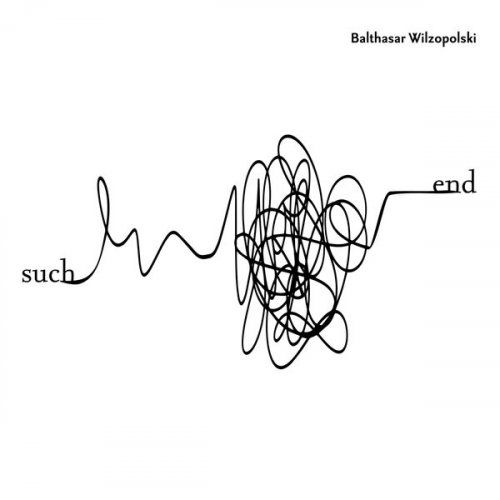
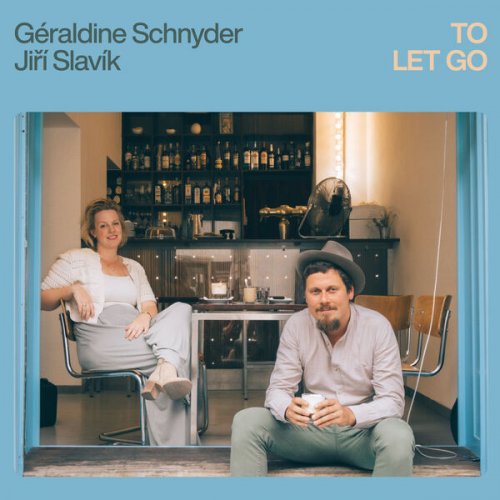
![Tomasz Stańko - Zamek mgieł (Polish Radio Sessions vol. 3/6) (2025) [Hi-Res] Tomasz Stańko - Zamek mgieł (Polish Radio Sessions vol. 3/6) (2025) [Hi-Res]](https://www.dibpic.com/uploads/posts/2025-12/1765795906_cover.jpg)
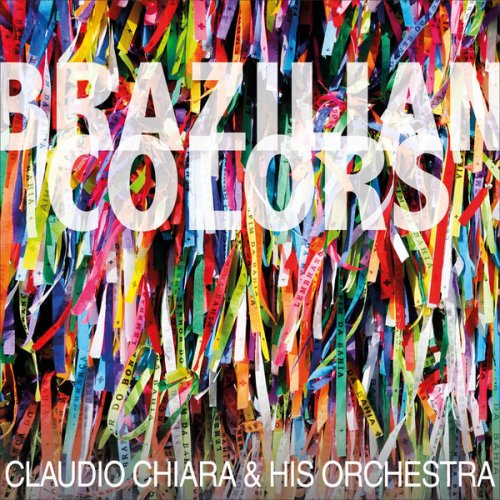
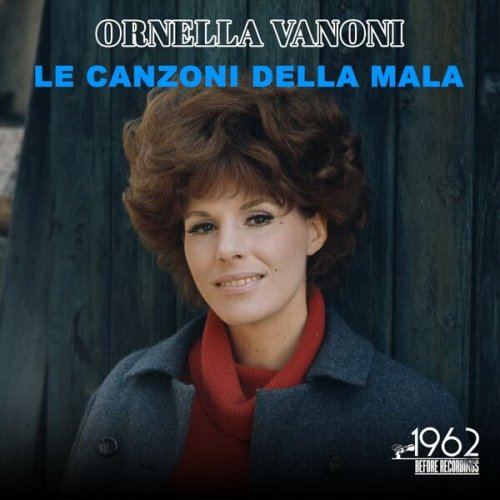
![Koldo Munné & 1520's Ensemble - Live at Jamboree Live Music (2025) [Hi-Res] Koldo Munné & 1520's Ensemble - Live at Jamboree Live Music (2025) [Hi-Res]](https://www.dibpic.com/uploads/posts/2025-12/1765846749_ck2b0xbsb8jna_600.jpg)
![Zamballarana - Sirena (2025) [Hi-Res] Zamballarana - Sirena (2025) [Hi-Res]](https://www.dibpic.com/uploads/posts/2025-12/1765620486_bhmusoyvnhizd_600.jpg)
